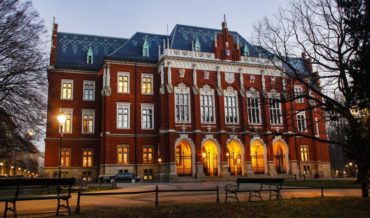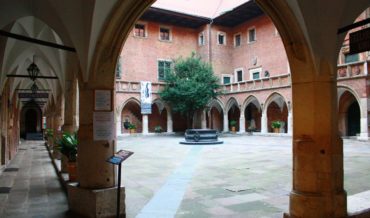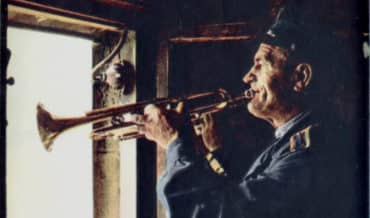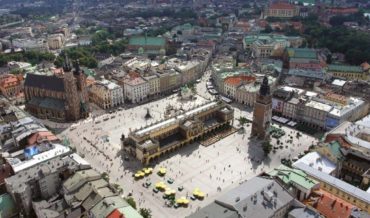Contents
Key Facts
• Born in 1812 in Krakow, Poland
• Studied at Jagiellonian University before becoming a prominent architect and builder
• Director of construction and pioneer of modern fire prevention methods in building
• Brother-in-law to Karol Estreicher, the famous bibliographer
• Key contributor to Krakow's reconstruction after the devastating 1850 fire
• Restored iconic landmarks including St. Mary's Basilica tower, Barbican, and St. Florian's Gate
Early Life and Education
Karol Kremer was an architect, restorer and builder who played a pivotal role in shaping 19th-century Krakow's architectural landscape. He was born in 1812 in Krakow, during a period when the city was part of the Austrian partition of Poland, experiencing significant political and social changes.
He studied at the Jagiellonian University, one of Europe's oldest and most prestigious institutions of higher learning. His education at this renowned university provided him with a solid foundation in engineering and architectural principles that would later prove invaluable in his professional career. The university's rich architectural heritage, including Gothic and Renaissance buildings dating back to the 14th century, likely influenced his deep appreciation for historical preservation, which became a hallmark of his later work.
After completing his studies, he later became a builder and then director of construction, advancing through the ranks of Krakow's building administration. This progression from student to builder to administrator gave him comprehensive experience in all aspects of construction, from hands-on masonry and timber-frame techniques to large-scale project management and municipal planning.
Personal Life and Connections
Kremer's personal life was deeply intertwined with Krakow's intellectual circles. He married Maria Grabowska, connecting him to one of the city's established families. Through this marriage, Karol Estreicher was his brother-in-law – a relationship that linked him to one of Poland's most distinguished scholars and bibliographers. This family connection placed Kremer at the heart of Krakow's cultural and academic community, where ideas about preservation, modernization, and national heritage were actively discussed during the Polish national revival period.
Revolutionary Contributions to Fire Safety
The Catalyst: The Great Fire of 1850
The main contribution of Karol Kremer was the introduction of modern fire prevention methods in construction. This innovation wasn't born in a vacuum but emerged from tragedy. The reason for this was the huge fire of Krakow in 1850, which burned many valuable buildings throughout the city's historic center. This devastating event became one of the most significant fires in Krakow's history.
The 1850 conflagration was one of the most devastating disasters in Krakow's modern history, destroying centuries of architectural heritage within hours. The fire exposed the vulnerability of traditional building methods common throughout Central Europe – wooden structures with timber-frame construction, traditional organic roofing materials like wooden shingles and thatch, and narrow medieval streets created perfect conditions for fires to spread rapidly from building to building.
Innovative Fire Prevention Methods
Witnessing this destruction firsthand, Kremer pioneered the implementation of fire-resistant building techniques that were revolutionary for the Austrian Empire territories. His methods, which compared favorably to contemporary developments in Vienna and Prague, included:
- Introduction of fire-resistant materials such as replacing wooden shingles with ceramic tiles and slate roofing, and utilizing brick and stone construction over traditional timber-frame methods
- Implementation of improved ventilation systems to prevent the accumulation of combustible gases in attics and basements
- Development of firebreaks and protective spacing between structures where the medieval urban layout permitted
- Use of modern roofing materials and metal structural reinforcements that were less susceptible to ignition and structural collapse
These innovations made Kremer a pioneer in building safety standards that influenced construction practices not only throughout the Austrian partition territories but also served as a model for other Central European cities facing similar urban fire risks.
Major Restoration Projects
Religious Architecture
Kremer rebuilt the burned Dominican and Franciscan churches, two of Krakow's most important religious sites that suffered severe damage in the 1850 fire. His approach to these reconstructions was groundbreaking, as he managed to preserve the historical integrity of the buildings while incorporating modern safety features.
The Dominican Church reconstruction was particularly challenging, as it required rebuilding significant portions of the 13th-century Gothic structure while maintaining its architectural authenticity. The complex task involved sourcing period-appropriate materials and employing traditional stone-carving techniques alongside modern structural reinforcements. Kremer's work on the Franciscan Church demonstrated his ability to blend traditional craftsmanship with contemporary engineering principles, particularly in addressing the challenges of Gothic ribbed vaulting restoration.
Iconic Landmarks
One of Kremer's most celebrated achievements was his work on St. Mary's Basilica. He restored the famous tower of St. Mary's Basilica, the iconic structure that dominates Krakow's Main Market Square. This restoration required exceptional skill, as the tower's 14th-century construction presented unique engineering challenges including foundation stabilization and the preservation of the medieval wooden framework supporting the spires, while its cultural significance as a symbol of Krakow demanded the highest standards of historical accuracy.
University Buildings
Kremer's connection to the Jagiellonian University extended beyond his student years. He contributed to a thorough renovation of the Collegium Iuridicum and Collegium Maius, two of the university's most historic buildings. The Collegium Maius, dating to the 15th century and being one of Europe's oldest university buildings, required particularly sensitive restoration work that balanced preservation with modernization needs of a 19th-century academic institution.
These university renovations demonstrated Kremer's understanding that educational institutions needed to be both historically respectful and functionally modern. His work involved upgrading heating systems, improving structural stability, and enhancing natural lighting while preserving original Gothic and Renaissance architectural details.
Medieval Fortifications
Perhaps most significantly for Krakow's cultural heritage, Kremer undertook major renovations of the city's medieval defensive structures. His work on the Barbican and St. Florian's Gate helped preserve two of Europe's best-preserved medieval fortification systems.
The Barbican restoration was particularly complex, involving the stabilization of the circular fortress structure's 15th-century brick construction and the preservation of its distinctive architectural features including the crenellated walls and defensive portcullises. St. Florian's Gate required careful attention to both its defensive architecture and its decorative Gothic elements, ensuring that this important city entrance remained structurally sound while preserving its original medieval character.
Legacy and Impact
Influence on Modern Building Standards
Kremer's pioneering work in fire prevention laid the groundwork for modern building safety regulations in Poland and influenced similar developments across the Habsburg territories. His integration of safety measures with historical preservation created a methodology that was studied and adopted in other major Central European cities including Vienna, Prague, and Budapest, where similar medieval urban cores required modernization.
Preservation of Cultural Heritage
Through his meticulous restoration work, Kremer saved countless architectural treasures that might otherwise have been lost to time, neglect, or inappropriate renovation. His approach of respecting historical authenticity while ensuring structural integrity became a standard for heritage conservation practices that influenced the development of modern conservation principles later codified by organizations like ICOMOS.
Educational and Professional Impact
As both a product and benefactor of the Jagiellonian University, Kremer helped establish traditions of academic excellence in architectural and engineering education. His practical experience combined with theoretical knowledge created a comprehensive approach to building design and restoration that influenced subsequent generations of Polish architects and contributed to the development of architectural education programs throughout the region.
Karol Kremer's contributions to Krakow's architectural heritage remain visible today in the beautifully preserved buildings and monuments that continue to attract millions of visitors to the city. His innovative approach to combining historical preservation with modern safety standards created a lasting legacy that helped establish Krakow as one of Europe's best-preserved medieval cities and was instrumental in the foundational work that eventually contributed to its designation as a UNESCO World Heritage Site in 1978.
References
- Bogdanowski, Janusz. Architektura Krakowa w XIX wieku. Wydawnictwo Literackie, Kraków, 1979.
- Rożek, Michał. Przewodnik po zabytkach Krakowa. Wydawnictwo WAM, Kraków, 2010.
- Krakowski, Piotr. Krakow: Its History and Art. Interpress Publishers, Warsaw, 1985.
- Archiwum Państwowe w Krakowie, "Akta Miasta Krakowa – Dokumenty dotyczące odbudowy po pożarze 1850," zespół 29, seria II.
- Rocznik Krakowski, Tom XXV, Towarzystwo Miłośników Historii i Zabytków Krakowa, 1934.




